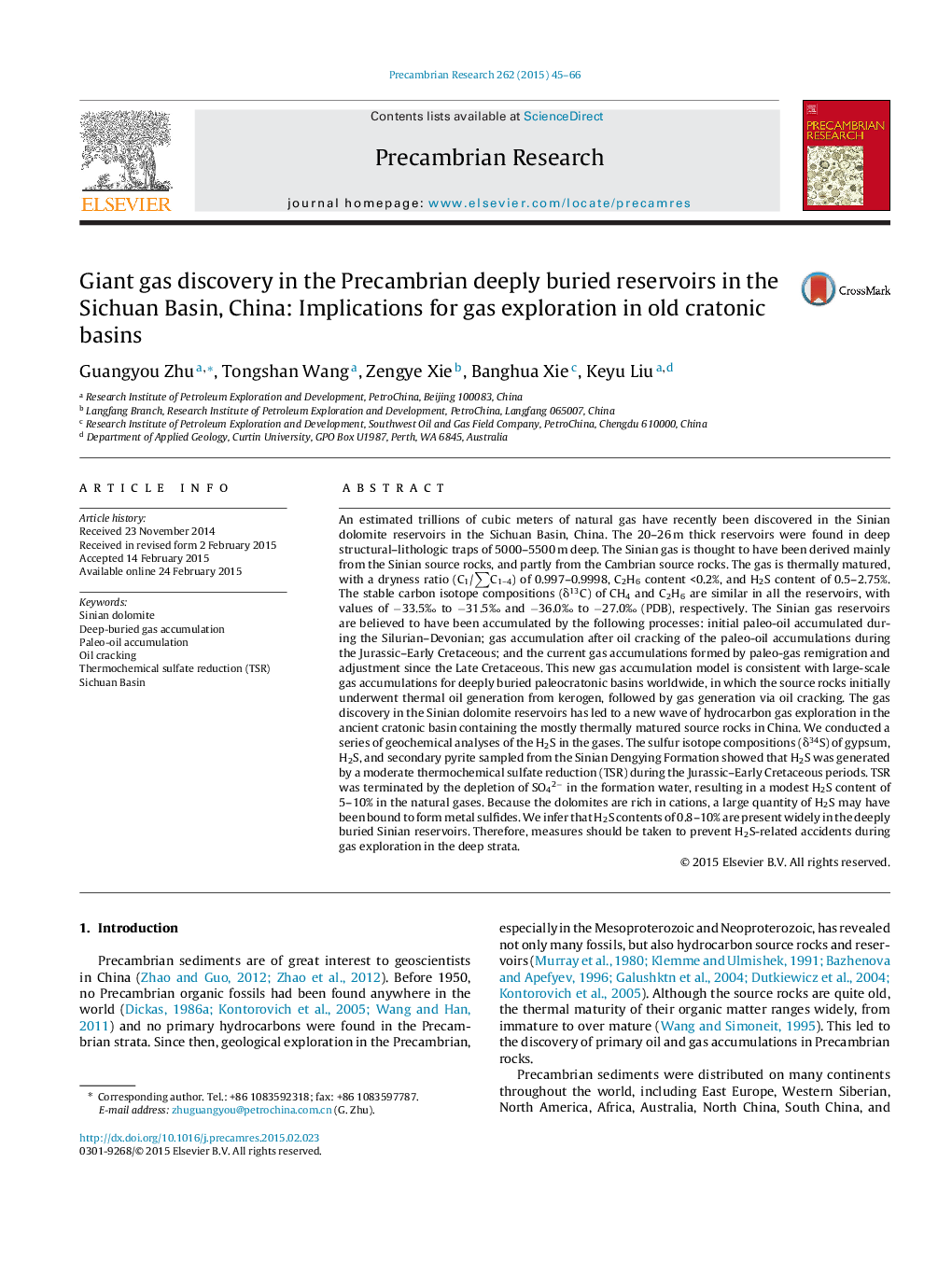| کد مقاله | کد نشریه | سال انتشار | مقاله انگلیسی | نسخه تمام متن |
|---|---|---|---|---|
| 4722591 | 1639613 | 2015 | 22 صفحه PDF | دانلود رایگان |
• Gases of the giant field are mainly derived from the Sinian rocks.
• Gas reservoirs of the field are mainly within the Sinian strata.
• Gases of the field formed mainly from oil-cracking.
• Gases of the field have extremely high dryness ratios.
• Gases of the field suffered medium-level thermochemical sulfate reduction (TSR).
An estimated trillions of cubic meters of natural gas have recently been discovered in the Sinian dolomite reservoirs in the Sichuan Basin, China. The 20–26 m thick reservoirs were found in deep structural–lithologic traps of 5000–5500 m deep. The Sinian gas is thought to have been derived mainly from the Sinian source rocks, and partly from the Cambrian source rocks. The gas is thermally matured, with a dryness ratio (C1/∑C1–4) of 0.997–0.9998, C2H6 content <0.2%, and H2S content of 0.5–2.75%. The stable carbon isotope compositions (δ13C) of CH4 and C2H6 are similar in all the reservoirs, with values of −33.5‰ to −31.5‰ and −36.0‰ to −27.0‰ (PDB), respectively. The Sinian gas reservoirs are believed to have been accumulated by the following processes: initial paleo-oil accumulated during the Silurian–Devonian; gas accumulation after oil cracking of the paleo-oil accumulations during the Jurassic–Early Cretaceous; and the current gas accumulations formed by paleo-gas remigration and adjustment since the Late Cretaceous. This new gas accumulation model is consistent with large-scale gas accumulations for deeply buried paleocratonic basins worldwide, in which the source rocks initially underwent thermal oil generation from kerogen, followed by gas generation via oil cracking. The gas discovery in the Sinian dolomite reservoirs has led to a new wave of hydrocarbon gas exploration in the ancient cratonic basin containing the mostly thermally matured source rocks in China. We conducted a series of geochemical analyses of the H2S in the gases. The sulfur isotope compositions (δ34S) of gypsum, H2S, and secondary pyrite sampled from the Sinian Dengying Formation showed that H2S was generated by a moderate thermochemical sulfate reduction (TSR) during the Jurassic–Early Cretaceous periods. TSR was terminated by the depletion of SO42− in the formation water, resulting in a modest H2S content of 5–10% in the natural gases. Because the dolomites are rich in cations, a large quantity of H2S may have been bound to form metal sulfides. We infer that H2S contents of 0.8–10% are present widely in the deeply buried Sinian reservoirs. Therefore, measures should be taken to prevent H2S-related accidents during gas exploration in the deep strata.
Journal: Precambrian Research - Volume 262, June 2015, Pages 45–66
